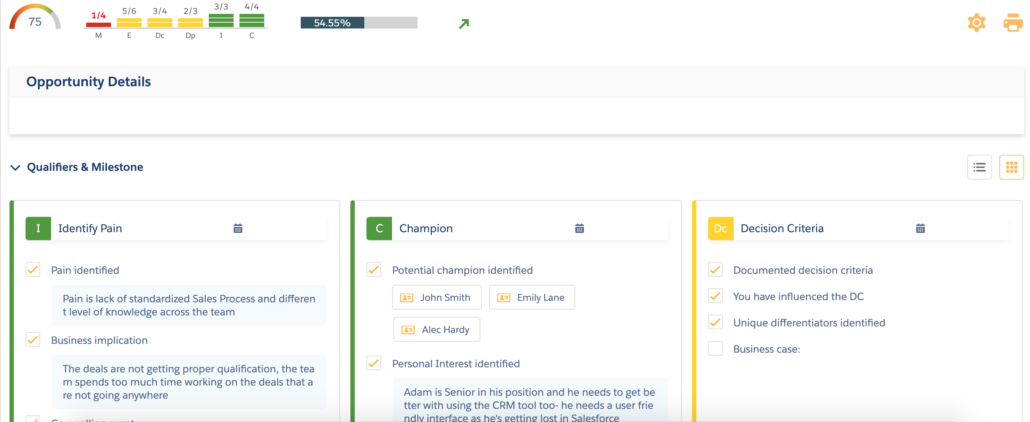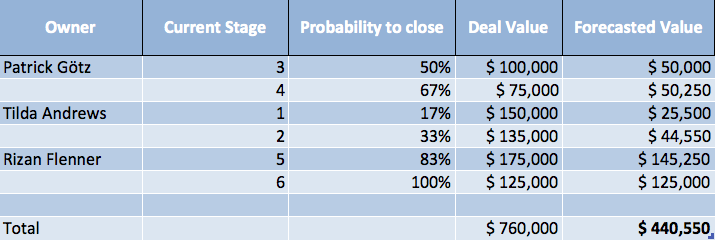What is Weighted Sales Pipeline and Why It’s Problematic
Ever since I was promoted to sales management in the late ‘90s, I’ve been confronted with the measurement of the weighted sales pipeline and forecast methodologies. In my business of high tech and software sales, it really never worked out for me to predict the outcome at the end of the quarter or year based on weighted forecasts.
I’ve asked dozens of sales leaders how the weighted sales pipeline worked for them. NONE of them thought this was a reliable method.
There were numerous reasons. Large deals impacting the weighted sales pipeline, sandbagging reps (i.e. reps intentionally forecasting lower than they could close), shortcuts taken in sales stages during sales processes, CRMs not being up to date, etc.
It’s an unreliable way to predict where you will finally end up in terms of revenue.
And yet, the weighted sales pipeline IS the standard forecasting method in many of the biggest CRMs out there. In addition, this method is being used by countless organizations everyday.
Why Is This So?
Because it can work at the executive level for large corporations – where there’re hundreds of deals in the pipeline and the statistical variations on single deals don’t matter.
However, if you are a regional manager or running a smaller sales organization, this method adds ZERO to little value for you. This is because whether a single large deal closing or not can throw off your entire forecast.

Not sure if that’s going to turn out the way he expected…
Along the way, sales leaders have found a temporary solution to this. The deals which are not “committed” for the quarter are considered as “best case”. These “best case” deals are still tracked on top of the committed deals as potential upside deals that could close in a given quarter.
This approach to creating a forecast based on a committed baseline plus these “best case” deals allows smaller and larger sales organizations to create a solid forecast at the beginning of the quarter that will develop and most likely improve over the quarter.
However, the accuracy of a forecast built on the gut of sales leaders pretty much depends on their experience and how thoroughly they have qualified each opportunity in the pipeline.
Additionally, qualifying on a deal-by-deal basis means going through each and every opportunity with their reps, which takes up a LOT of valuable time spent on lengthy forecast or big deal review calls.
A Common Sales Qualification Approach
To combat this, high performance companies have identified some qualifiers that make or break a deal to establish a common sales qualification approach.
(E.g. is there a real pain involved, do we have an ally in the account, have we met the economic buyer?)
They packaged these main qualifiers and gave them acronyms that are easy to remember (like MEDDIC, SPIN Selling, BANT and many more). Sales managers, reps and all other customer-facing organizations are then trained on these qualifiers.
This establishes a common language across the organization, allowing them to qualify their pipeline in a standardized and structured fashion, based on their best practice.
This significantly cuts down the time spent on qualifying each opportunity, because everybody on the team now speaks the same “qualifying language”. Therefore, they know what to look for and how to contribute.
Some of the qualifiers i.e. “the economic buyer” are triggers or gates that allow the deal to move on to the next stage. This impacts the forecast level or the amount of time and resources that will be allocated to the opportunity.
As a result, an accurate forecast built on facts can be created. Progress can then be made by giving supporting departments such as tech, legal or finance clear visibility on the right amount of resources to allocate.
iSEEit Opportunity Management Tool
The iSEEit Opportunity Management Tool was created to enable sales teams to visualize and follow their sales processes directly in Salesforce in order to generate a reliable, evidence-based forecast.

During the opportunity qualification process, custom qualifiers, milestones and checklists can be defined to ensure that you stay on track with every opportunity.

The progress of every opportunity is tracked and visualized by using simple traffic light colors. As a result, gaps within the qualification process can be easily identified, giving you instant visibility on the next steps to take.
All in all, the iSEEit Opportunity Management Tool allows you to weigh your pipeline based on deal qualification regardless of what has been done so far. This enables you to instantly visualize if a deal belongs in your forecast or not, giving you confidence in your evidence-based forecast. Click here to watch a quick overview of the iSEEit Opportunity Management Tool.
Watch the video below as Chief Revenue Officer at Espressive, Keno Helmi, shares more about how iSEEit on Salesforce has improved the deal qualification of his sales team, allowing him to achieve a more accurate forecast.

Ready to Run Your Sales Qualification on Salesforce.com?
iSEEit helps clients operationalize their sales qualification methodology directly on Salesforce and offers unlimited support. It is 100% native in Salesforce and can be customized to whichever sales methodology you are using! To learn more about visualizing your sales process on Salesforce, click the button below!








Leave a Reply
Want to join the discussion?Feel free to contribute!